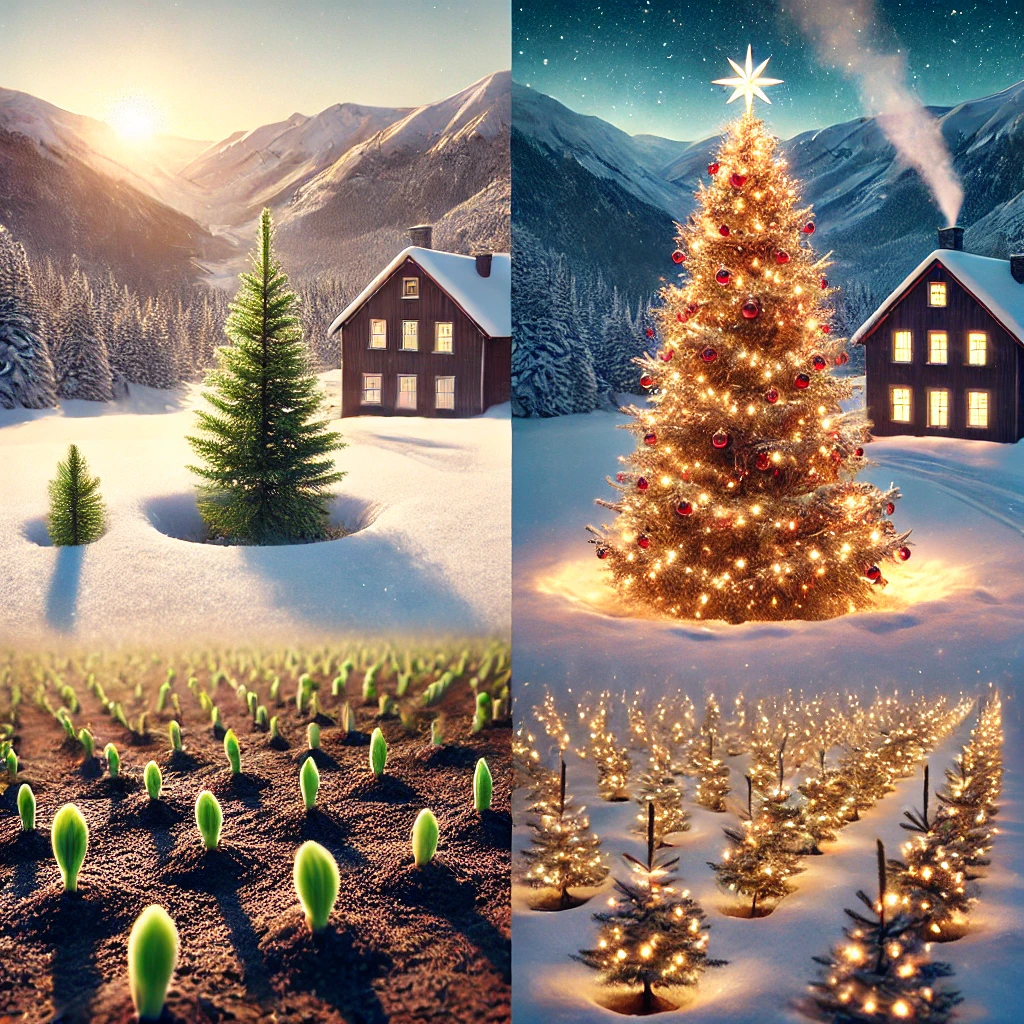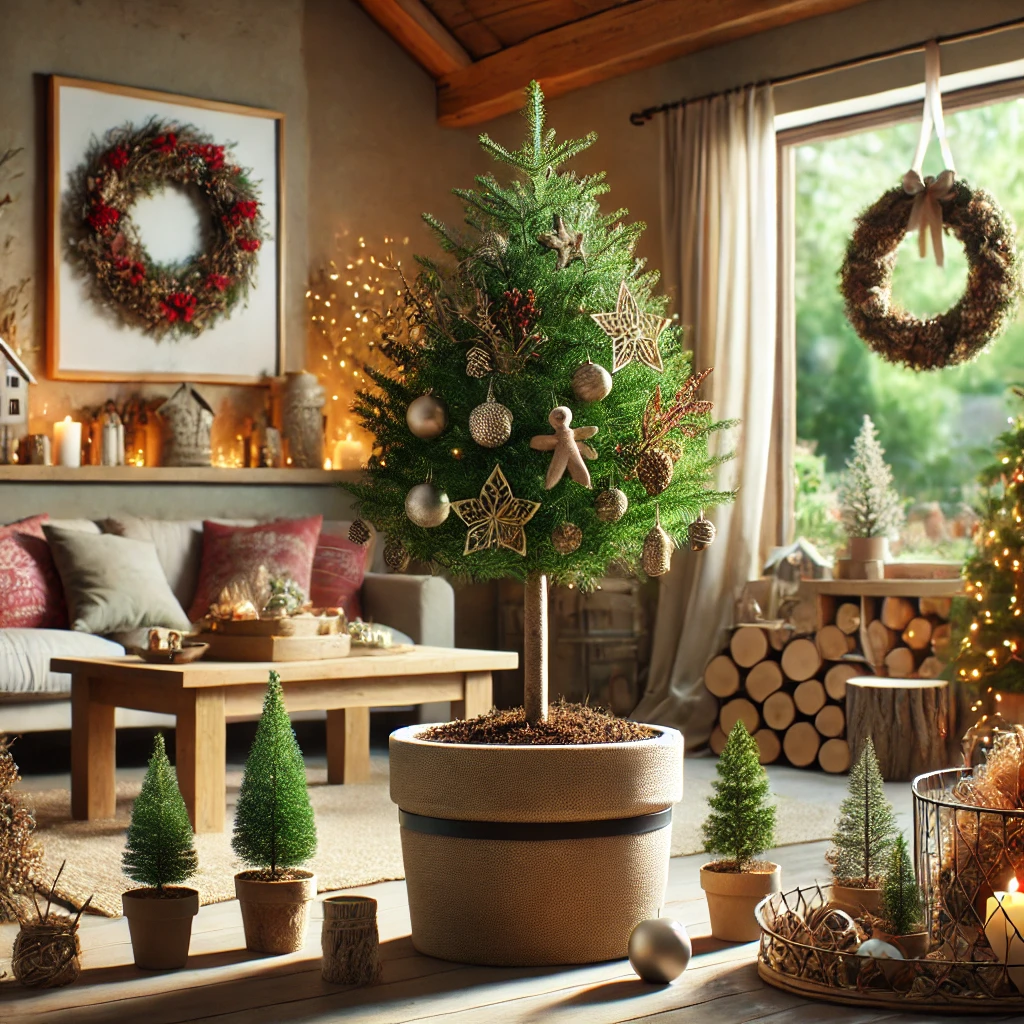Table of Contents
| Section | Description |
|---|---|
| The Journey of a Christmas Tree | Overview of how Christmas trees are grown. |
| Selecting and Planting Seeds | Details about seed selection and early growth. |
| Nurturing the Seedlings | Steps for caring for young seedlings. |
| Transplanting into Fields | How trees are transferred and spaced. |
| Pruning and Maintenance | The importance of pruning and pest control. |
| Harvesting the Christmas Trees | The process of cutting, bundling, and transport |
| Sustainable Tree Practices | Options like potted and reusable trees. |
| Conclusion | Appreciating the care behind the trees. |
The Journey of a Christmas Tree
As winter brings its chilly air, the excitement of the holiday season begins to shine. At the center of this festive time is the Christmas tree—a beloved symbol of joy and togetherness. But have you ever thought about how it’s grown? Let’s explore the amazing journey of a Christmas tree, from a tiny seed to the star of your holiday celebrations.

Selecting and Planting Seeds
It all begins with a tiny seed. Farmers pick seeds from tree types that are strong, look nice, and smell good. Popular choices are Douglas fir in the U.S. and Nordmann fir in the U.K. Once chosen, the seeds are planted in nurseries where they are carefully cared for until they grow into small seedlings.

During the first month, the seeds need regular watering and nutrient-rich soil to grow well. Nurseries create the perfect environment to help them thrive, and the seeds are planted in small containers to give their roots room to grow. This stage is very important because the young plants are fragile and need extra care.

Nurturing the Seedlings
Over the next year, the seedlings grow stronger with careful attention. Special watering systems deliver water straight to their roots, helping them grow healthy and strong. Farmers also use fertilizers to boost their growth.

The controlled nursery environment protects the young trees from pests and diseases, giving them the best chance to survive. Once they are strong enough, the seedlings are ready to move to the next stage of their journey.
Transplanting into Fields
After a year in the nursery, the young trees are moved to open fields. On small farms, this is done by hand, while larger farms use machines. The trees are planted about 4 to 6 feet apart so they get plenty of sunlight and space to grow.
This spacing keeps the trees from crowding each other, which could slow their growth. Once planted, they begin their long journey of growing into the beautiful Christmas trees we all know and love.

Pruning and Maintenance
Over the next 7–10 years, farmers dedicate countless hours to caring for their trees. Pruning is essential to encourage even branch distribution and achieve the iconic triangular shape. Regular inspections for pests like aphids, mites, and beetles are critical, as infestations can threaten entire crops.
Farmers also employ methods like drip irrigation to conserve water while keeping trees hydrated. The combination of science and skill ensures each tree matures to perfection.

Harvesting the Christmas Trees
Come late fall, it’s time to harvest. This labor-intensive season involves cutting down mature trees, bundling them with protective netting, and preparing them for transport. On smaller farms, workers use hand saws for precise cuts. Larger operations rely on machinery to process hundreds of trees a day.
Bundled trees are sorted by size and quality. Some are shipped internationally in refrigerated trucks, while others stay local, destined for homes, stores, or tree lots.

Sustainable Tree Practices
In recent years, potted Christmas trees have gained popularity. These eco-friendly options allow families to replant their trees after the holidays, giving them a second life.
Additionally, leftover trees are often repurposed for wreaths, mini trees, or even mulch, ensuring minimal waste. This sustainable approach highlights the industry’s commitment to the environment.

Conclusion
The next time you gather around your Christmas tree, take a moment to appreciate its incredible journey. Behind every twinkling light and ornament lies years of careful planning, nurturing, and dedication from farmers.
The Christmas tree, with its rich history and festive charm, is more than just a decoration—it’s a testament to the hard work and heart poured into making your holiday season truly magical.


